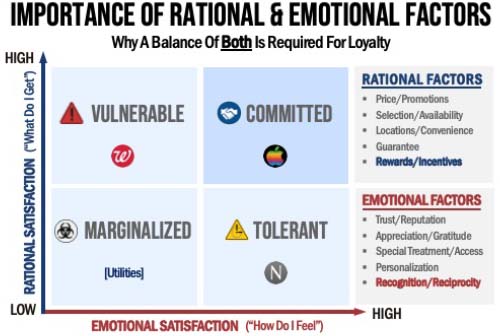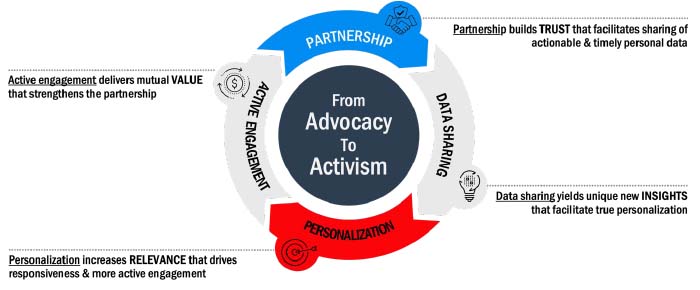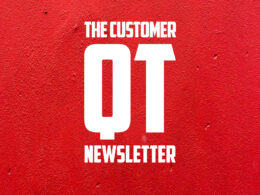A Blueprint for Active Customer Engagement in Today’s Market
Alone we can do so little; together we can do so much.
Helen Keller
Loyalty programs must evolve to meet the needs of today’s more diverse, informed, and empowered customers. Having remained essentially unchanged since introduced almost 40 years ago, problems continue to mount that threaten program viability.
by Mike Ribero
These problems have driven operating costs higher while member satisfaction continues spiraling downward. Equally concerning are recent increases in program liabilities associated with unredeemed points and miles, the result of complex and frustrating redemption processes. With US companies now spending over $2 billion annually to operate their loyalty programs, and with $150 billion in unredeemed loyalty points and miles, the economic pressure alone can crush current loyalty programs unless changes are made, and quickly.
The good news, according to the 2024 Antavo Global Customer Loyalty Report, is that 90% of companies plan to revamp their loyalty programs this year. To provide some direction, the following “10 Commandments,” or imperatives, can serve as a blueprint for next generation customer loyalty. The 10 are evenly split between strategic and operational imperatives, and given their scope, will be addressed in two parts. The five strategic imperatives are addressed in Part 1 below, with the five operational imperatives covered in Part 2, which will follow shortly.
STRATEGIC IMPERATIVES
While not an exhaustive list, the strategic imperatives that follow build upon each other so that their collective impact is far greater than the sum of what each can do individually. They combine new and original thinking to create an almost symbiotic framework that can immediately impact program performance while also ensuring effective evolution in the future:
Partnerships replace memberships
Today’s customers expect more from the brands they buy. According to the 2023 Edelman Trust Barometer, “The relationship between consumers and brands must evolve, as people feel more vulnerable, and their expectations of brands grow.” Those expectations are what make a partnership the ideal working relationship, as it levels the playing field, aligns interests, and offers inherent reciprocity. More importantly, partnerships build trust by giving customers a “stake” in a brand’s performance. In tandem with program incentives that consistently reward customers for the value they add or create, a partnership can be mutually beneficial and take loyalty to new levels.
Ecosystems supplant single brand programs
Single brand programs are limited in the opportunities and benefits they can offer, especially as participation grows. An ecosystem offers a broader array of options and far more flexibility while enabling brands to leverage their strengths and cover areas of need. They also provide significant economic advantages, as complementary brands can reduce their individual operating costs by opting for a collaborative ecosystem. At the same time, ecosystems can increase customer satisfaction by creating more opportunities to engage, and earn, making it a win – win.
Incentives push beyond purchase to drive active engagement
Customers today have proven they can provide tangible value beyond a purchase and intangible value beyond advocacy. Examples include sharing personal data, opting-into key initiatives, providing feedback, posting verified reviews, and a variety of other activity proven to add value. These activities can be incentivized like purchases are today. Creating more opportunities for customers addresses what recent research indicates is a strong desire for more and faster ways to earn as well as greater ongoing engagement after purchase. Increasing active engagement also has obvious reciprocal brand benefits, which like partnerships and ecosystems represents another win-win.
Original equilibrium must be restored
Beyond their failure to evolve and adapt, loyalty programs have lost much of the balance that helped make them successful. The more unbalanced the program, the less effective it becomes, especially when it comes to:
Rational and emotional bonding
Now more than ever, brands must engage customers rationally and emotionally. Only then can brands answer the two questions that determine brand choice,” What do I get” from the brand, and “How do I feel” about the brand (or “How does the brand make me feel”). Loyalty programs were designed reinforce both via a balanced combination of rewards to strengthen tangible value, and recognition to more effectively address customers’ emotional needs. However, near-term pressures made rewards the primary focus, with recognition all but forgotten, creating a problem made worse by automated attendants, chatbots, and other technology that supplanted the need for human interaction. The resulting emotional void has weakened loyalty, particularly among younger customers. After all, it is the emotional ties that bind, making a balanced combination critically important.

Tangible and experiential benefits/incentives
What motivates customers today has changed a great deal since loyalty programs were introduced. For some, points/miles may not have the same motivational appeal given their experience and the hassles associated with trying to use them. Others may care more about exclusive access and inside information, which represents a potential new currency based on what “money can’t buy.” Still others may be driven by competition, winning, and the bragging rights that come with it. Clearly, it is a combination of tangible andexperiential options that will motivate customers to engage at a higher level and restore the equilibrium required to sustain it. The good news is that an ecosystem makes adding experiential options easier, as a collective is far more capable of creating unique opportunities, access, and experiences.
Exclusivity and inclusion
Programs have lost some of their magic when it comes to the unique features and benefits available only those that participate. As a result, programs have become more commoditized and less attractive. Restoring the mystique exclusivity offers is relatively simple and can add immediate value while also addressing customers’ emotional needs. It just requires some imagination. However, exclusivity should not be confused with exclusion, as too many loyalty platforms exclude customers that do not meet certain criteria. Given the many ways customers can add value today, programs must be inherently inclusive, encouraging anyone willing to engage to participate. This can also help restore the equilibrium programs have lost over the years.
Personalization driven by personal data sustains commitment
While a partnership provides the ideal working relationship, it is the data sharing it facilitates that sustains it by fueling the commitment cycle critical to building and reinforcing loyalty. Data sharing also provides another win – win. With the right system, brands can offer customers more control over how and with whom they share personal data as well as safe and secure ways to monetize it. Brands benefit from access to actionable and compliant 360º personal data that extends beyond the brand, yielding insights not previously accessible. Those insights facilitate a level of personalization not previously possible, increasing relevance in a way that drives active engagement for maximum mutual benefit and value, as detailed below.
The Partnership-based Commitment Cycle

The resulting Partnership-Based Commitment Cycle helps forge stronger, more resilient, and sustainable personal relationships that strengthen the emotional bonds lost to technology. Further, it can unlock the latent brand-building potential of today’s customer, raising the standard for loyalty from advocacy to brand activism. After all, actions speak louder than words, especially in today’s market.
Remember, the five strategic imperatives provide maximum value as a collective with every element reinforcing the others to forge the strongest and most sustainable customer relationships possible. However, it all starts with a partnership that fosters communication, collaboration, and trust.
Watch for Part 2 of Loyalty Reimagined, as it provides five critical and complementary operational imperatives that support the five strategic imperatives and create their own value by making customer participation easier, flexible, and more rewarding, all with far less complexity.

Mike Ribero is CEO of Reach. He is one of the original architects of modern-day loyalty programs having built the Hilton Honors program, and previously, co-led the team that created Continental’s OnePass program, now part of United’s MileagePlus program. Learn more about Reach’s innovative new partnership platform that benefits both customers and brands here.












